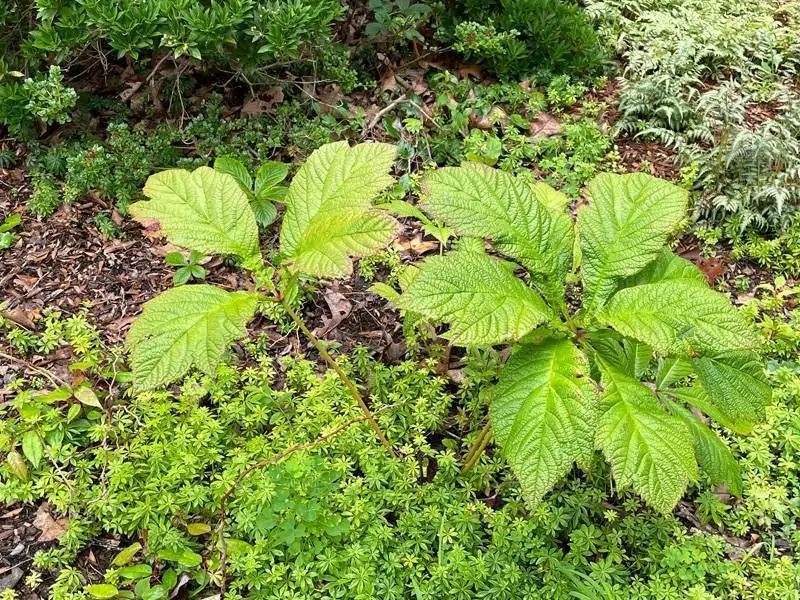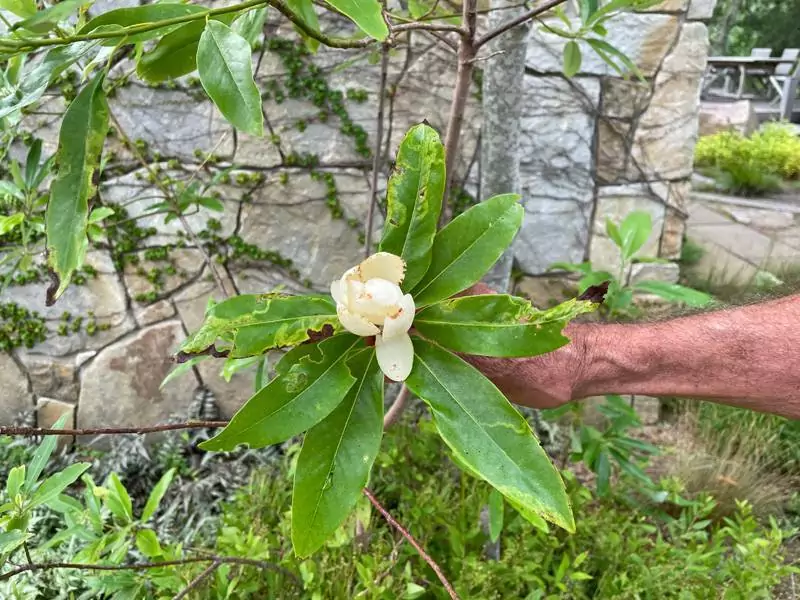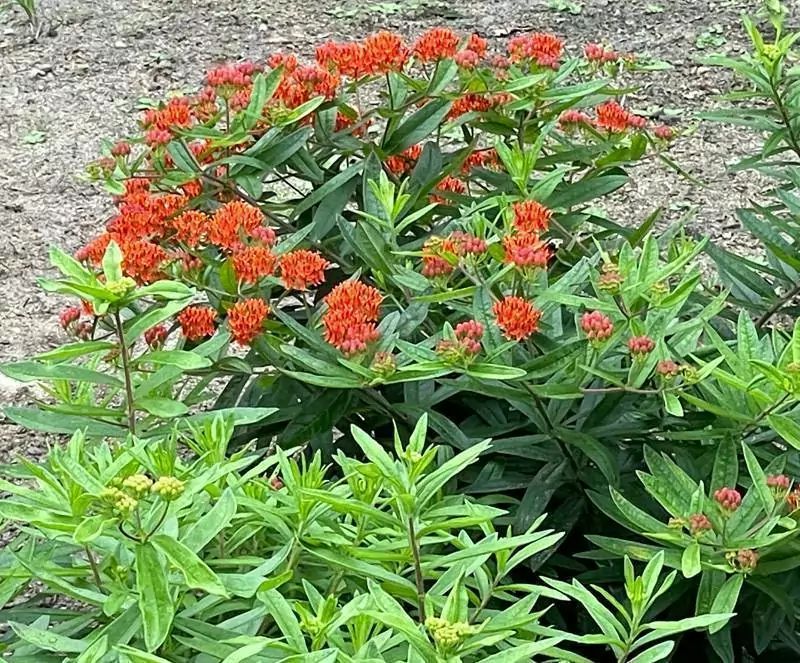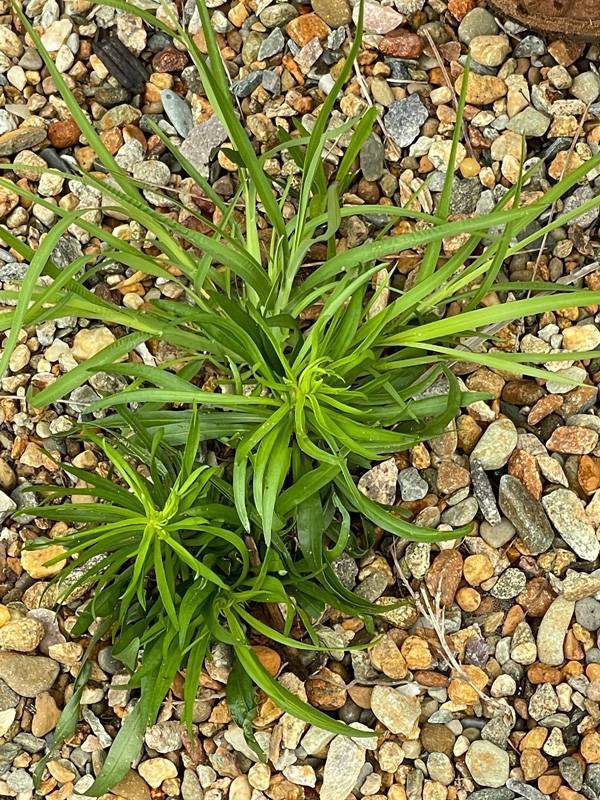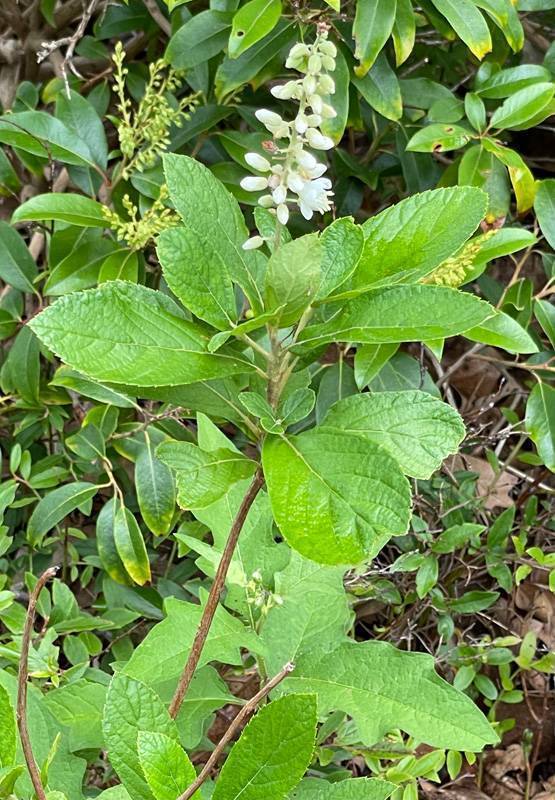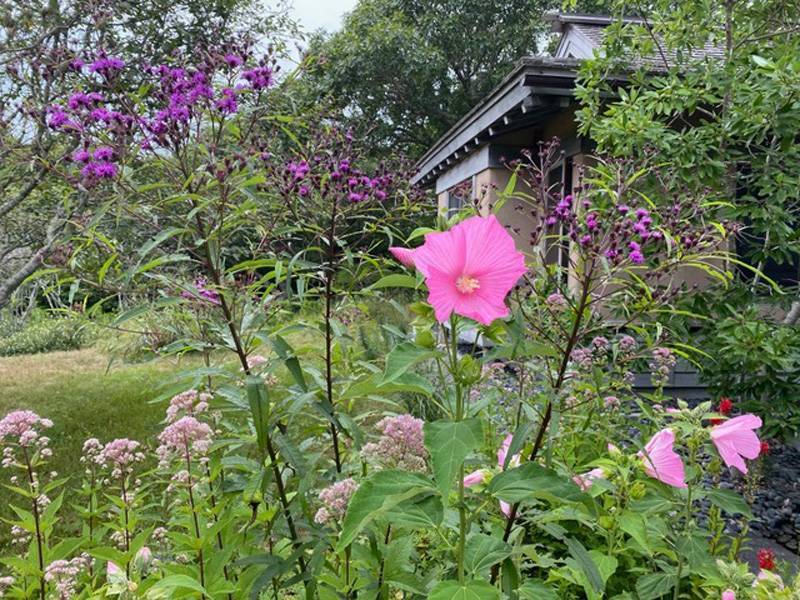It’s not so much landscaping as managing nature around his home, and not adding much.
It was a foggy summer morning when I drove up-Island; the fog became denser the farther I drove into Aquinnah. Although I’ve known Native Plant Associates founder Carlos Montoya for 15 years, I had never paid a visit to his home garden. He warned me over the phone that things were a bit of a mess — his son Josh was in the midst of building his home on the property. When I first moved to the Vineyard, it felt like every time I drove a new dirt road I was in a different state, and it definitely felt that way the moment I began driving on the dirt road into Montoya’s 13-acre homestead.
Sweet woodruff grows along the bottom edge with painted fern in the upper right corner, and large green Rodgersia plants in the center. Carlos shows me a fading bloom on the Magnolia virginiana, also known as Sweetbay Magnolia. Butterfly Weed along the drive- way. Asclepias tuberosa, also known as Butterfly Weed, was also in bloom during my visit. Liatris scariosa, also known as New England Blazing Star, grows in the middle of a stoney pathway. One of the few blooming plants during my visit was Clethra alnifolia, also known as Sweet Pepperbush. A shot of blooms still to come, in the ‘Rain Garden’: Joe Pye Weed (native), Rose Mallow (native), and New York Ironweed (not native).
Although mostly a New Yorker growing up, Carlos went to school in Madrid in 1952, and when his family moved back to New York, he loved visiting his mother’s family’s Long Island home. At the time, the town of Wainscott was still mostly potato farms. Carlos first saw Moshup Trail in 1971 on a visit to his sister-in-law, who had just moved to the Island. He says the south-facing shore of Long Island has the same plants and feel as Moshup Trail. Growing up, he liked to prune plants and “keep certain areas clear” when visiting Wainscott. As much as plants were of interest to Carlos then (he says he declared that he wanted to be a forest ranger in 10th grade), he explains, “my mother’s father was a diplomat, and that’s what they wanted me to be. So I was on a track to join the Foreign Service.” Although Carlos studied for four years, and admits that he “wasn’t too bad at it,” he said it wasn’t for him. He says he still keeps up on foreign affairs.
After that first visit to Moshup Trail, Carlos knew he wanted to live there. Following a separation from his first wife, losing his Vermont home (along with other life losses), Carlos moved to the Vineyard in 1982 and started over. He’d been working for the New York Times News Service, but upon arriving here, the Vineyard Gazette had no jobs, so he decided he would find a way to specialize in the native plants and grasses he loved. Through a friend’s recommendation, Carlos started working for Nick Freydberg to create a little pond from the stream running beside the Freydbergs’ Chilmark home. Freydberg was the head of the investors for the Oyster Watcha Midlands project in Edgartown. Carlos tears up when he relates how Nick was there for him at the lowest point in his life. The two men are so different, but became close friends.
The first investor on the Oyster Watcha site to build a house turned to Nick, who recommended Carlos, and the rest is history. Carlos’ passion was to preserve the fields, the meadows, the grasses and indigenous plants — he feels so fortunate to work with those who share this passion, first Nick and then others. In those early days, Carlos had no truck, so he hired Trip Barnes, who used a 1948 converted school bus to go to Sylvan Nursery in Westport to get the plants for his first job. It was all a “bit haphazard,” he says. He says he and Trippy were “like Abbott and Costello,” but things gradually got more professional after that.
For his business, Pitch Pine Nursery, which he operated for 12 years in West Tisbury, he was a full-service design contractor doing ornamental work.
Carlos wanted to know more about sandplains grasslands, the ecosystem native to much of Martha’s Vineyard. He began to study, but it was mostly on his own — there isn’t much formal education on the topic. In fact, Carlos explains, sandplains grasslands are globally rare and “only exist on Martha’s Vineyard, Nantucket, Cape Cod, and Eastern Long Island, where I grew up. They were geologically all connected, and grew apart.” Early on in his new career, Carlos says, he was always trying to mix native plants with the ornamentals.
During his time running Pitch Pine, he got Lyme disease, which forced him to take a two-year hiatus as he recovered. When he returned to work, he focused exclusively on sandplain grasses.
Before moving to Moshup Trail, he lived in rentals, and never had a garden of his own. Though he purchased his land in 1995, his Japanese- and Southwest-influenced home was not completed until 1999. There are a number of larger rocks around Carlos’s home that came from digging out the foundation. Mostly Carlos manages nature around his home, not adding much. There is a small area planted with ferns around his front patio, then nature takes over. Carlos planted ferns because of the shade, explaining that it’s hard to revegetate around a house that has mostly shade.
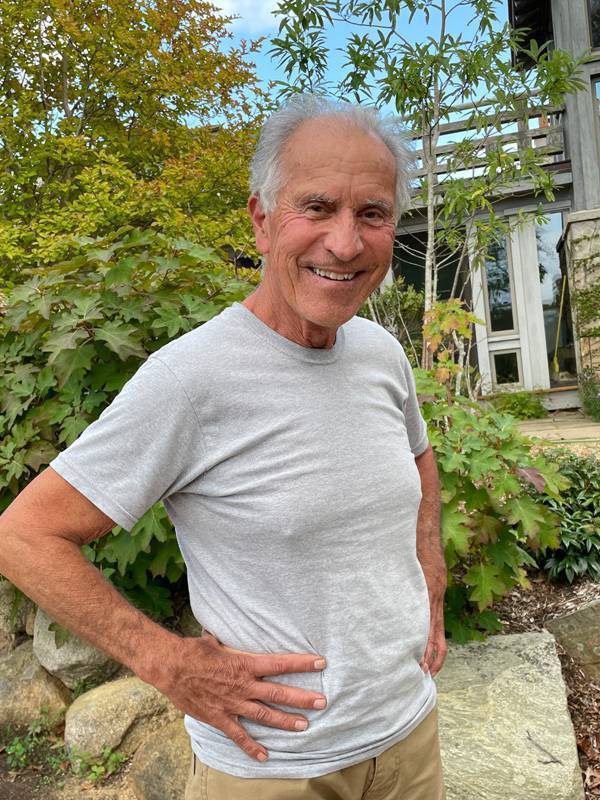
Carlos has a wide variety of native plants. There are dwarf conifers that he trims back. There’s Lysimachia, a genus with over 150 species from summer-flowering to evergreen perennials, according to Fine Gardening. There are volunteer iris, native Joe Pye weed (which can grow to six feet in the sun), boneset (a wetland native), sweet woodruff (a shade-loving ground cover). There’s lowbush blueberry, huckleberry, a stiff aster, lilies Carlos planted. Looking around, Carlos says that he probably planted just four out of everything we saw, and then they repopulated. “This is my favorite of all plants — little bluestem is the core grass of a sandplain grassland,” he explains. Most common in Midwest prairies, it’s also known as beard grass, and according to wildflower.org, is one of the East’s most important native prairie grasses. When I wonder what his family’s Long Island place was like, he tells me his parents’ meadow was a “little bluestem meadow with a little bit of sheep fescue,” often used in erosion control.
We pass a New England blazing star, a native coastal species that is “virtually pest-free, disease-free, and deer-resistant,” according to gardenia.net. Another of his “absolute favorites is bearberry.” Nearby is the prettiest butterfly weed I’ve ever seen. Carlos harvested rose mallow seed along Moshup Trail, then created plugs that he planted. “A plug is a grown plant that is only five inches deep and two-and-a-half inches wide,” he tells me. To Carlos’s complete surprise, after renting and rototilling an area where the new road runs to his son Josh’s home, still a work in progress, the whole area is sprouting knotweed, and Carlos is still trying to figure out how it survived. There are volunteer asters before we move onto a grassy area. “That’s mainly sedge, a native,” Carlos says, “rescued from a job on Chappy so it wouldn’t be thrown out. You have to hatchet it into plugs; you can’t seed it. Once hatcheted, you can plant it, much like a hair transplant. You put a little sheep fescue in between, since it’s a natural companion.”
Carlos has not retired, but he is only doing native plants and native meadow work. It’s exactly what he wants to be doing. Our native grasses, Carlos explains, are warm-weather grasses that don’t need to be mowed down. Carlos says his website describes it best: “What we do is sandplain restoration, and that’s all we do.”
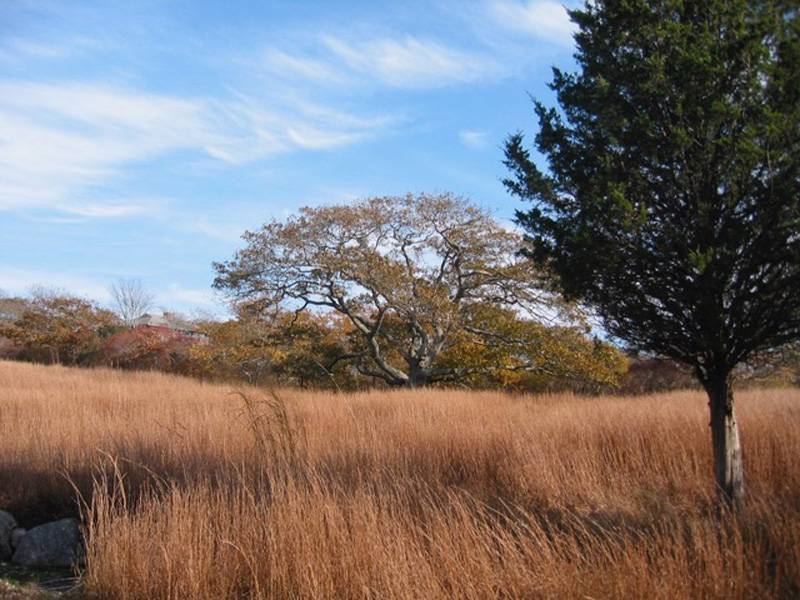
With that, we’ve made a full circle around his home, stand on the new driveway, and look out to a pond I learn was once likely “a depression left over from peat harvesting days, of which there was a good bit in Aquinnah in the 19th century, when it was dried and used as fuel.” Carlos shared his deep passion for nature, keeping companion native species sharing growing areas. The landscaping I visited was subtle with deep textures. Visiting Carlos in his element where every detail has both his and nature’s imprint was a welcome delight.
Learn more about what Carlos Montoya is up to at nativeplantassociates.com/sandplain-grassland-community/.


